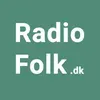Danish Live Radio Stations
Radio Stations
Choose a Genre
Danish Music: A Journey Through Centuries of Sound and Innovation
Danish music is a reflection of Denmark’s rich cultural heritage, blending centuries-old traditions with modern influences to create a diverse and dynamic soundscape. From the evocative melodies of traditional folk music to the cutting-edge beats of contemporary pop, rock, and electronic music, Denmark’s musical scene has something to offer every listener. Over the years, the country has produced a wide variety of internationally renowned artists and composers, ensuring that Danish music continues to make its mark on the global stage.
The Roots of Danish Music: From Viking Tunes to Folk Rhythms
Danish music traces its roots back to the Viking era, where the foundations of traditional folk music were laid. The sounds of Denmark’s ancient past are still felt in the vibrant folk music traditions that continue to thrive in the country today. Early Danish music was often played on traditional instruments such as the fiddle, accordion, and harmonica, creating lively and infectious rhythms that were perfect for dancing and social gatherings.
Much of Denmark's folk music revolves around storytelling, with songs that reflect themes of love, loss, and life in the countryside. These folk tales, passed down through generations, offer a glimpse into the everyday lives and struggles of people living in rural Denmark. While these traditional songs are still cherished by many Danes, they have also evolved over time, influencing a variety of musical genres.
The Rise of Modern Danish Music: Jazz, Rock, and Pop
In the 20th century, Danish music began to embrace more modern and diverse influences. The jazz scene in Denmark, in particular, became a significant part of the cultural landscape. Starting in the 1930s, Denmark saw the rise of internationally recognized jazz musicians, such as Bent Fabricius-Bjerre and Niels-Henning Ørsted Pedersen, who would go on to shape the country's musical identity. Danish jazz has been known for its experimental, avant-garde approach, combining elements of European and American jazz to create something uniquely Danish.
During the same period, rock and pop music began to make their way into the Danish musical scene. By the 1960s and 1970s, Denmark had fully embraced the rock revolution, with bands like Gasolin’ leading the charge and becoming some of Denmark's most iconic musical acts. This era marked the beginning of a new era for Danish music, as rock bands started to gain local popularity, and eventually, international acclaim.
As the years went by, Danish pop music became a major force, with artists and bands such as Aqua and Whigfield reaching global success. Their catchy melodies and infectious rhythms became anthems of the 1990s, putting Danish music on the map for a whole new generation of listeners.
Contemporary Danish Music: Pop, Indie, and Electronic Innovation
Today, Danish music is a rich tapestry of diverse genres, blending the traditional with the modern. The indie rock scene in Denmark is thriving, with bands like MØ, Lukas Graham, and The Raveonettes leading the charge. These acts are known for their unique sound, which blends introspective lyrics with infectious beats, and have garnered international followings in recent years. MØ, in particular, has gained global attention for her mix of pop, indie, and electronic elements, showcasing Denmark's ability to merge different musical styles with a distinctly Danish sensibility.
In addition to indie rock, Danish electronic music is also gaining increasing recognition on the global stage. Trentemøller, known for his atmospheric and emotive electronic compositions, has made waves both in Denmark and internationally. Similarly, Kölsch, a Danish DJ and producer, has become one of the leading names in the world of house and techno, showcasing Denmark's growing influence in the electronic music scene.
Danish pop music continues to resonate with audiences around the world, with artists like Medina and Rasmus Seebach making major impacts. These musicians often incorporate a blend of catchy pop hooks, electronic production, and emotional storytelling, connecting with listeners on a global scale.
Danish Radio: A Portal to the Country’s Musical Heritage and Innovation
Danish music’s legacy is alive and well today, and there are many radio stations dedicated to showcasing this rich history. Whether you are a fan of traditional folk music, classic rock, or the latest pop and electronic hits, there is something for everyone. These radio stations not only feature songs from Denmark’s most iconic artists but also provide a platform for emerging musicians to share their innovative sounds with a global audience.
For those interested in exploring the full breadth of Danish music, radio stations are a fantastic way to discover new artists and revisit the timeless classics that have shaped the Danish sound. These stations reflect the diversity and creativity that are at the heart of Denmark’s musical identity, offering a unique listening experience that spans genres and generations.
Conclusion: A Dynamic Musical Landscape
Danish music is as varied and vibrant as the country itself, offering everything from centuries-old folk traditions to the latest electronic beats. Its rich cultural heritage, combined with a strong sense of innovation, has created a musical landscape that continues to evolve and thrive. Whether you’re drawn to the infectious rhythms of Danish folk music or the cutting-edge sounds of contemporary pop and electronic music, Denmark offers something for everyone. As the global music scene becomes increasingly interconnected, Danish music remains an exciting and influential force, contributing to the soundtrack of our world in meaningful and inspiring ways.
Danish music is a reflection of Denmark’s rich cultural heritage, blending centuries-old traditions with modern influences to create a diverse and dynamic soundscape. From the evocative melodies of traditional folk music to the cutting-edge beats of contemporary pop, rock, and electronic music, Denmark’s musical scene has something to offer every listener. Over the years, the country has produced a wide variety of internationally renowned artists and composers, ensuring that Danish music continues to make its mark on the global stage.
The Roots of Danish Music: From Viking Tunes to Folk Rhythms
Danish music traces its roots back to the Viking era, where the foundations of traditional folk music were laid. The sounds of Denmark’s ancient past are still felt in the vibrant folk music traditions that continue to thrive in the country today. Early Danish music was often played on traditional instruments such as the fiddle, accordion, and harmonica, creating lively and infectious rhythms that were perfect for dancing and social gatherings.
Much of Denmark's folk music revolves around storytelling, with songs that reflect themes of love, loss, and life in the countryside. These folk tales, passed down through generations, offer a glimpse into the everyday lives and struggles of people living in rural Denmark. While these traditional songs are still cherished by many Danes, they have also evolved over time, influencing a variety of musical genres.
The Rise of Modern Danish Music: Jazz, Rock, and Pop
In the 20th century, Danish music began to embrace more modern and diverse influences. The jazz scene in Denmark, in particular, became a significant part of the cultural landscape. Starting in the 1930s, Denmark saw the rise of internationally recognized jazz musicians, such as Bent Fabricius-Bjerre and Niels-Henning Ørsted Pedersen, who would go on to shape the country's musical identity. Danish jazz has been known for its experimental, avant-garde approach, combining elements of European and American jazz to create something uniquely Danish.
During the same period, rock and pop music began to make their way into the Danish musical scene. By the 1960s and 1970s, Denmark had fully embraced the rock revolution, with bands like Gasolin’ leading the charge and becoming some of Denmark's most iconic musical acts. This era marked the beginning of a new era for Danish music, as rock bands started to gain local popularity, and eventually, international acclaim.
As the years went by, Danish pop music became a major force, with artists and bands such as Aqua and Whigfield reaching global success. Their catchy melodies and infectious rhythms became anthems of the 1990s, putting Danish music on the map for a whole new generation of listeners.
Contemporary Danish Music: Pop, Indie, and Electronic Innovation
Today, Danish music is a rich tapestry of diverse genres, blending the traditional with the modern. The indie rock scene in Denmark is thriving, with bands like MØ, Lukas Graham, and The Raveonettes leading the charge. These acts are known for their unique sound, which blends introspective lyrics with infectious beats, and have garnered international followings in recent years. MØ, in particular, has gained global attention for her mix of pop, indie, and electronic elements, showcasing Denmark's ability to merge different musical styles with a distinctly Danish sensibility.
In addition to indie rock, Danish electronic music is also gaining increasing recognition on the global stage. Trentemøller, known for his atmospheric and emotive electronic compositions, has made waves both in Denmark and internationally. Similarly, Kölsch, a Danish DJ and producer, has become one of the leading names in the world of house and techno, showcasing Denmark's growing influence in the electronic music scene.
Danish pop music continues to resonate with audiences around the world, with artists like Medina and Rasmus Seebach making major impacts. These musicians often incorporate a blend of catchy pop hooks, electronic production, and emotional storytelling, connecting with listeners on a global scale.
Danish Radio: A Portal to the Country’s Musical Heritage and Innovation
Danish music’s legacy is alive and well today, and there are many radio stations dedicated to showcasing this rich history. Whether you are a fan of traditional folk music, classic rock, or the latest pop and electronic hits, there is something for everyone. These radio stations not only feature songs from Denmark’s most iconic artists but also provide a platform for emerging musicians to share their innovative sounds with a global audience.
For those interested in exploring the full breadth of Danish music, radio stations are a fantastic way to discover new artists and revisit the timeless classics that have shaped the Danish sound. These stations reflect the diversity and creativity that are at the heart of Denmark’s musical identity, offering a unique listening experience that spans genres and generations.
Conclusion: A Dynamic Musical Landscape
Danish music is as varied and vibrant as the country itself, offering everything from centuries-old folk traditions to the latest electronic beats. Its rich cultural heritage, combined with a strong sense of innovation, has created a musical landscape that continues to evolve and thrive. Whether you’re drawn to the infectious rhythms of Danish folk music or the cutting-edge sounds of contemporary pop and electronic music, Denmark offers something for everyone. As the global music scene becomes increasingly interconnected, Danish music remains an exciting and influential force, contributing to the soundtrack of our world in meaningful and inspiring ways.


